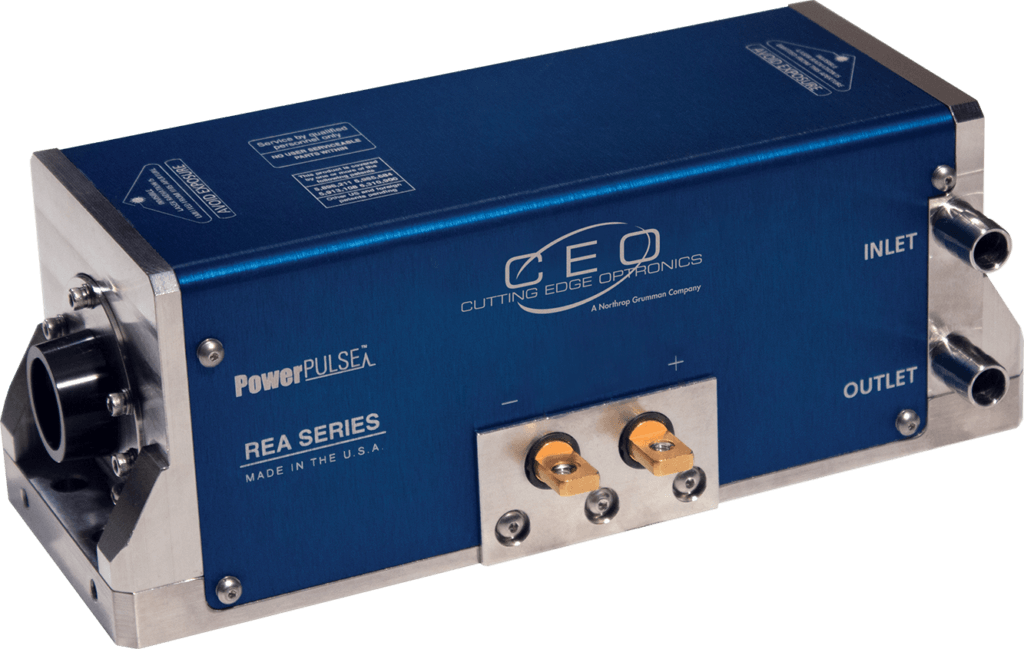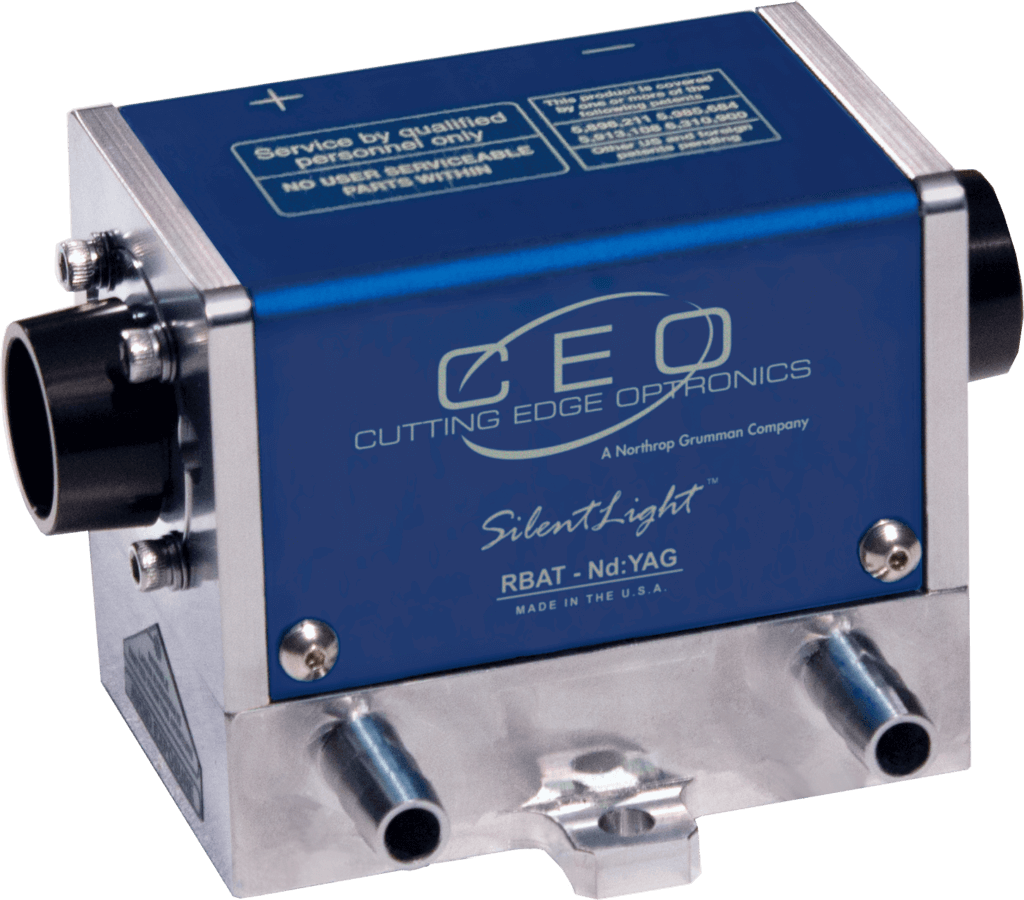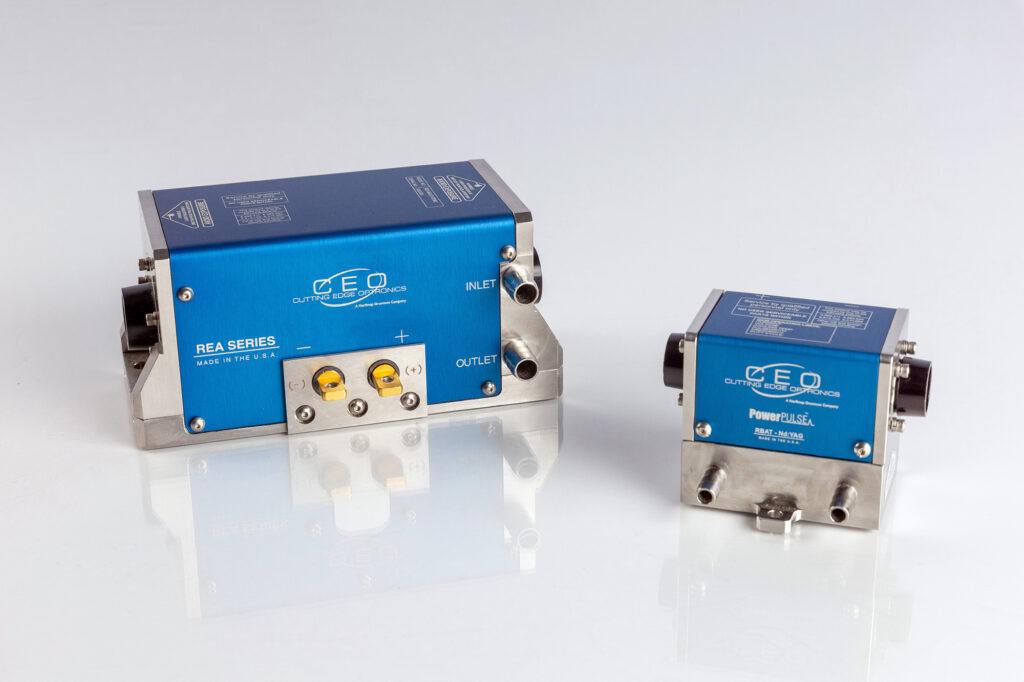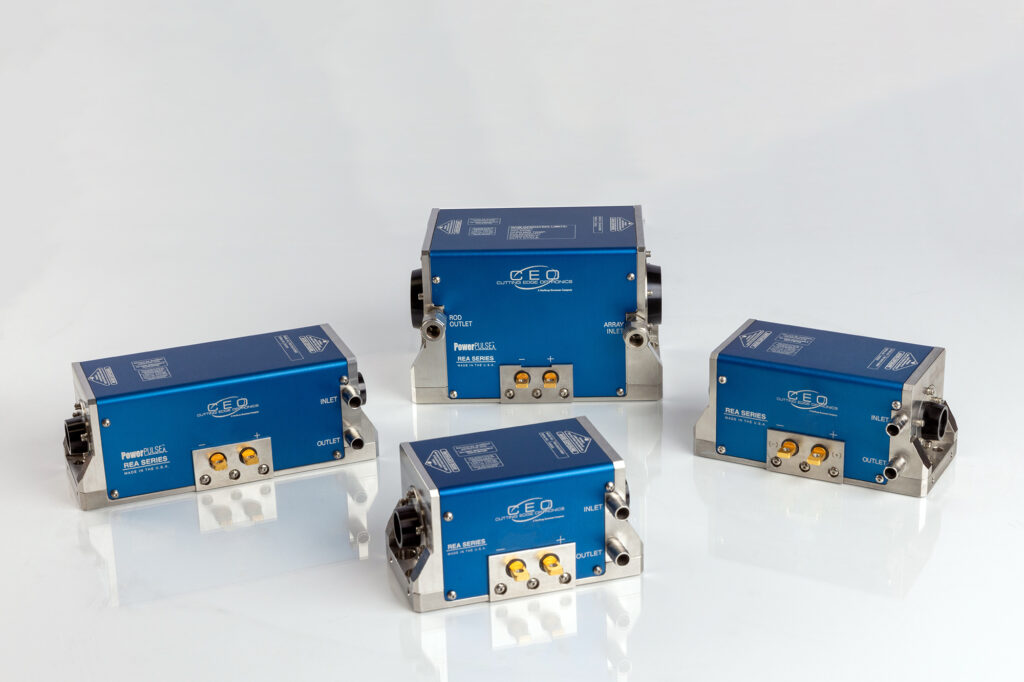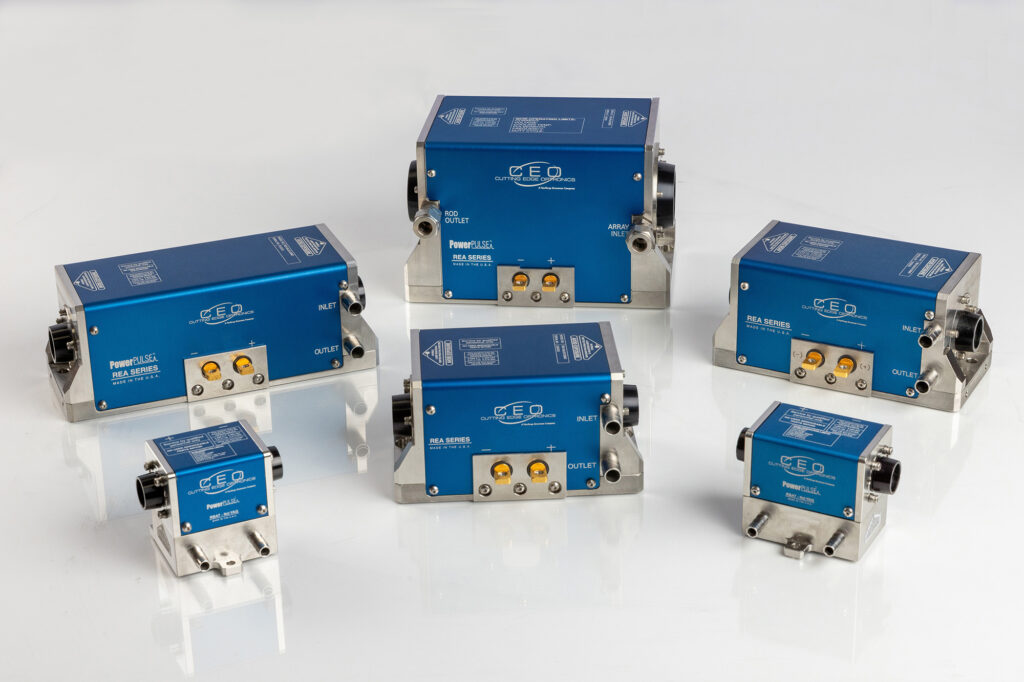ENABLING HIGH AVERAGE POWER
Nd:YLF’s high saturation fluence (low-gain cross-section) allows high laser fluence while minimizing pulse distortion.
It has a relatively weak thermal astigmatism as well. However, its poor transmitted wavefront quality and low thermal fracture limit are disadvantages that must be addressed. In the design of large diameter high energy Nd:YLF amplifiers, CEO employs the use of MRF on the laser crystals in order to minimize transmitted wavefront error (TWE). Large TWE can negatively impact beam quality and subsequent SHG conversion efficiency (as well as efficiencies in Ti:S, OPA, and OPCPA pumping.) MRF enables higher energy pulses, higher repetition rates, and, thus, higher average power. Pairs of modules with increasingly larger A-cut rods are used further downstream to amplify the light, with the crystal axes in each pair arranged orthogonally to minimize thermal birefringence distortions.


